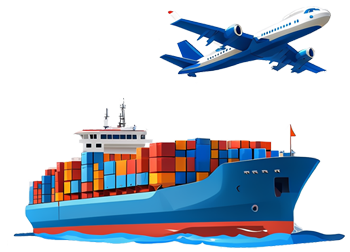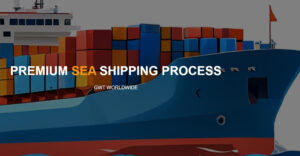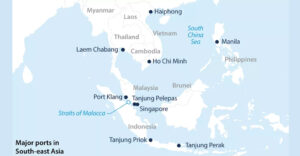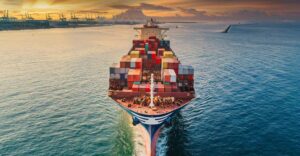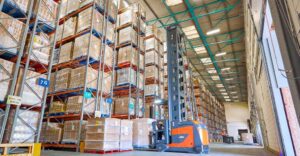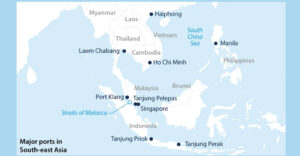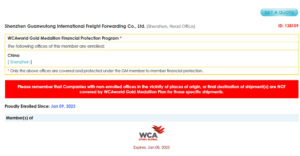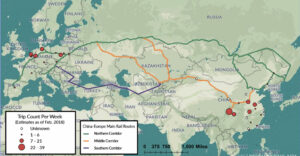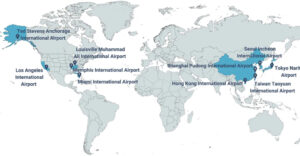Le système mondial des ports à conteneurs se caractérise par une forte concentration du trafic, les 25 plus grands ports à conteneurs gérant plus de 49,8% du trafic mondial en 2020. Les plus grands ports à conteneurs du monde soulignent les relations complexes entre les ports orientés vers l'exportation (par exemple Shanghai et Hong Kong), les ports orientés vers l'importation (par exemple Los Angeles / Long Beach) et les plateformes intermédiaires (par exemple Singapour et Dubaï). On assiste également à l'émergence d'une géographie des ports à conteneurs impliquant une spécialisation entre les ports à conteneurs agissant en tant que passerelles et moyeux intermédiaires. Les ports d'entrée donnent accès à de grandes régions de production ou de marché et sont le fer de lance de corridors à longue distance. Hong Kong, Los Angeles et Rotterdam sont des exemples notables de ports donnant accès à un arrière-pays vaste et complexe. Les ports intermédiaires (ou hubs offshore) sont des lieux intermédiaires où les conteneurs sont transbordés entre différents segments du système mondial de transport maritime, à l'instar des hubs dans le transport aérien. Singapour et Dubaï comptent parmi les principaux hubs de transbordement, chacun desservant un marché de transbordement spécifique (Asie du Sud-Est et Moyen-Orient/Asie du Sud, respectivement).
Les changements récents dans le trafic conteneurisé reflètent l'évolution de la dynamique commerciale dans l'économie mondiale. Les ports nord-américains ont connu des changements limités, en partie en raison des niveaux de consommation maximaux, la demande portuaire ayant été fortement affectée par la récession de 2008-10. En 2015, les volumes de trafic de conteneurs étaient à peine revenus à leurs niveaux de 2008. Les ports japonais ont connu une croissance importante dans les années 1970 et 1980, complétée par les ports coréens et taïwanais dans les années 1990. La dynamique de croissance récente la plus importante a eu lieu le long de la côte chinoise, où, au cours des années 2000, le processus orienté vers l'exportation était en plein essor. Les ports du nord de l'Europe, principalement Anvers et Rotterdam, se sont développés en partie grâce à l'accessibilité de l'arrière-pays à l'intérieur de l'Europe. Il existe également une "ceinture de transbordement" allant du détroit de Malacca au détroit de Gibraltar, qui a connu une croissance notable du trafic. Elle concerne en particulier Singapour, Dubaï, la sortie du canal de Suez (par exemple Port Saïd) et le détroit de Gibraltar (Tanger Med, Algésiras et Valence). Les ports d'Amérique du Sud se développent aussi activement grâce à la croissance économique (renforcement de l'arrière-pays) et au transbordement (Panama, Cartagena, Callao).

